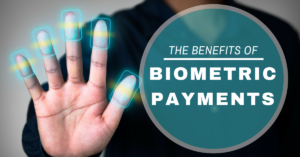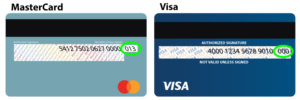Reduce Mobile Payment Fraud for Your Business
What Are Mobile Payments?

Mobile payments is payment using smartphones. This could occur either at your business or, if you sell products from your website or an app, from anywhere. Types of mobile payments include:
- Point of sale payment that occurs in-store at a POS payment terminal. The customer taps the phone on the terminal or makes the payment with the press of a button on the smartphone
- Carrier payments through a phone service provider, where the customer makes a purchase from their mobile and then sees the charge as an item on their phone bill
- Using mobile payment apps, like Apple Pay, Samsung Pay, Android Pay, or PayPal
- Using a mobile wallet, like Google Wallet
- Businesses like Starbucks and Walmart have their own apps that accept payments, and, increasingly, small businesses are selling products through their own apps
Accepting mobile payments gives your customers flexibility. But accepting mobile payments can expose your business to mobile payment fraud.
How to Fight Mobile Payment Fraud
According to a 2016 American Express survey, 70% of mobile merchants increased online, yet 60% reported experiencing fraud.
However, the survey also found that buyers enjoy the flexibility of mobile shopping so much that they’re ready to take additional steps to help prevent fraud as part of their transaction.
1. Install a Secure Wi-Fi Network
Use a secure Wi-Fi network at your business. Securing your network can help you reduce the chances of hackers intercepting data. If you encrypt the network as well, any data the hackers steal will be useless. Here’s how to secure and encrypt your network:
- Create a unique password.
- Choose a new SSID name.
- Encrypt your network.
2. Use Biometric Feature Detection

Latest devices come with several biometric features to confirm a user’s identity: fingerprint scanning, voice and facial recognition, and geofencing (using the GPS feature to create geographical boundaries).
To protect your business from accepting a fraudulent mobile payment, direct your app developer to ensure your business app includes biometric feature detection. Then, if biometric features are not detected, your developer should include a second method of identity verification for each mobile payment transaction.
3. Verify Identity by Email or Phone
Add a layer of mobile payment fraud protection. For mobile purchases from your online store or through your app, use a two-factor authentication method (2FA) that sends a verification code to the email address (or to the phone, via call or text) associated with the customer’s account.
4. Use Browser Detection to Prevent Unprotected Mobile Browsers
If your business accepts mobile payments for items in your online shop, include browser detection in your mobile payment process. This prevents users from completing transactions through unsafe browsers. Instead, your customers will see a message encouraging them to make purchases through the company app, or showing the browsers your site does support.
5. Require a CVV Code for Mobile Transactions

Most businesses that accept mobile payments are accepting credit card payments. While credit card companies themselves are working hard to reduce mobile fraud, add an extra layer of protection by requiring the CVV code (also known as a CVD or CVC code) for all “card-not-present” transactions, such as mobile payments.
Requiring a CVV code for mobile transactions means the user must have access to the physical card to complete the transaction.
6. Use AI, Analytics, and Machine Learning to Identify Fraudulent Patterns in Data

Companies such as Fraugster, Signifyd and Riskified use artificial intelligence (AI) and machine learning to analyze payment data in order to reduce mobile payment fraud for online merchants.
By identifying purchase patterns, payment preferences, and the geographical locations of mobile users, programs developed by these companies create digital identities of consumers. If a mobile payment occurs that doesn’t match the pattern for the user, the transaction gets denied. To take advantage of the latest AI technology to identify fraudulent data patterns, install a program like Fraugster, Signifyd, or Riskified that integrates with many of the most popular e-commerce platforms like Shopify, Magento, or Big Commerce.
With the changes in consumers’ purchasing preferences, it’s clear that the convenience and benefits of accepting mobile payments can make good sense for your small business. Doing so will help protect both your business and the customers you serve.
